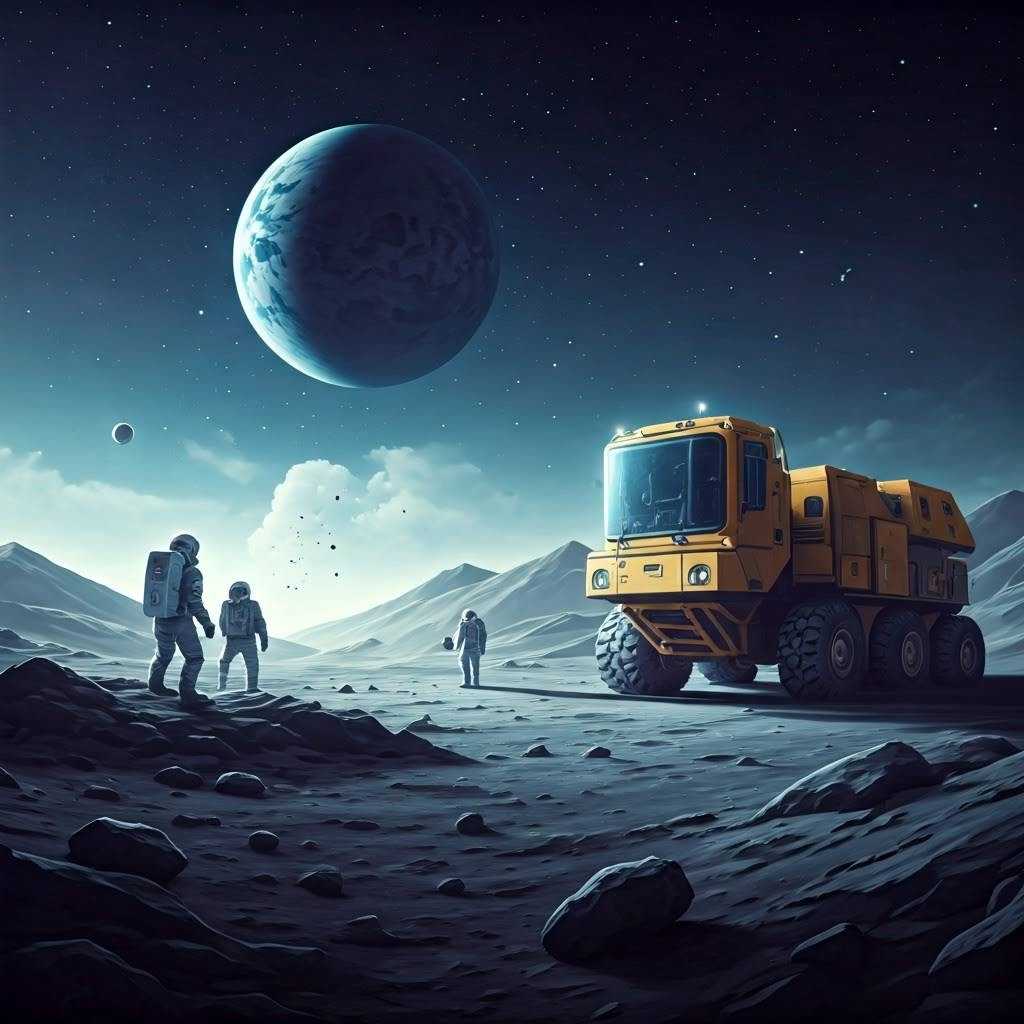The Moon is Calling: Why Humanity is Ready to Go Back
52 years after Apollo 17, lunar exploration is booming again. Driven by resource scarcity and the promise of Helium-3 for fusion power, scientists envision lunar mining and a permanent moon base as stepping stones to asteroid mining and a new era of energy.

It’s been 52 years since humanity last left its boot prints on the dusty surface of the Moon. December 7, 1972, marked the beginning of Apollo 17’s journey—NASA’s final manned mission to our closest celestial neighbor. Since then, our ambitions to return to the Moon have been, let’s face it, somewhat tepid. We got distracted. Politics happened. Budgets tightened. But today, a new kind of space race is brewing, fueled not by Cold War rivalries but by something far more potent: the tantalizing prospect of mining the Moon and kickstarting a permanent human presence beyond Earth.
Alejandro Farah Simón, a bigwig at the University Space Program of UNAM, reckons we’re on the cusp of a lunar renaissance. And he’s got a point. “52 years have passed,” he says, “and after all this development and achievement of humanity, going to the Moon with manned missions was put on hold due to the high costs and political, economic, and technological difficulties.” Fair enough. Back in the Apollo days, we were essentially strapping ourselves to tin cans loaded with dynamite and hoping for the best. Now? We’ve got reusable rockets, autonomous landing systems, and more computing power in our phones than the Apollo spacecraft had in total.
Why Go Back Now?
The big reason, according to Farah, is that Earth’s resources are running out. That’s right—our little blue planet is like a party where the beer is running low, and everyone’s starting to eye the fridge for reserves. Except in this case, the fridge is 384,400 kilometers away, on the Moon.
Farah isn’t just dreaming of lunar gold rushes for fun. He highlights Helium-3, a rare isotope that’s practically non-existent on Earth because our pesky magnetic field keeps it out. On the Moon, however, it’s sitting there, waiting to be scooped up. Helium-3 could revolutionize nuclear fusion, providing a clean, nearly limitless energy source. If we can get our hands on it, Farah argues, it would “change the history of humanity once again.”
And it’s not just Helium-3. The Moon is packed with other goodies: titanium, rare earth metals, and water ice that could be turned into rocket fuel. Mining these resources isn’t just about making a quick buck—it’s about securing the future of civilization.
Mining the Moon isn’t just about sending robots up there to dig holes and bring back shiny rocks. The grand vision is to establish a permanent lunar base—a sort of cosmic pit stop for future space exploration. From this outpost, we could launch missions to asteroids and beyond. It’s like building a service station on the motorway, except this one’s for interplanetary travel.
Of course, none of this is easy. Farah reminds us that even the Apollo missions, with their massive budgets and Cold War urgency, barely scratched the surface of what’s possible. But those missions did more than plant flags and collect rocks. They laid the groundwork for everything we’re dreaming of today.
Take Apollo 17, for example. Alongside the glamour of moonwalks and rock collecting, it carried out crucial experiments. Reflectors were placed on the Moon’s surface, allowing scientists to measure its distance from Earth with lasers. Seismometers recorded lunar quakes, helping us understand the Moon’s interior. They even studied the solar wind and the Moon’s feeble magnetic field. It wasn’t just a joyride—it was a masterclass in how to explore a world beyond our own.
The Cost of Cosmic Ambition
So, what’s holding us back? The usual suspects: money and politics. Farah points out that manned missions are expensive, and unless there’s a compelling reason to go, they’re hard to justify. Back in the 60s and 70s, the US and the Soviet Union were locked in a space race, each desperate to outdo the other. That rivalry gave us Apollo, but it also left us with a hangover. Once the race was won, the funding dried up, and humanity’s lunar ambitions were put on ice.
But things are changing. Today, governments, private companies, and academic institutions are teaming up in ways that would have been unthinkable during the Cold War. Industry giants like SpaceX and Blue Origin are developing the technology to make space travel cheaper and more sustainable. Meanwhile, universities and research institutions are driving innovation, and governments are finally starting to see the value in long-term investment.
If we get this right, the Moon won’t just be a destination—it’ll be a stepping stone. Farah envisions a future where humanity uses the Moon as a launchpad for exploring the rest of the solar system. From there, we could mine asteroids, establish colonies on Mars, and eventually venture into the great unknown.
But first, we’ve got to get back to the Moon. It’s been half a century since Apollo 17’s Eugene Cernan etched his daughter’s initials into the lunar dust, making him the last human to walk on the Moon. Isn’t it time we changed that?
The Moon is calling, and this time, we’re not just going for the view. We’re going to stay.




